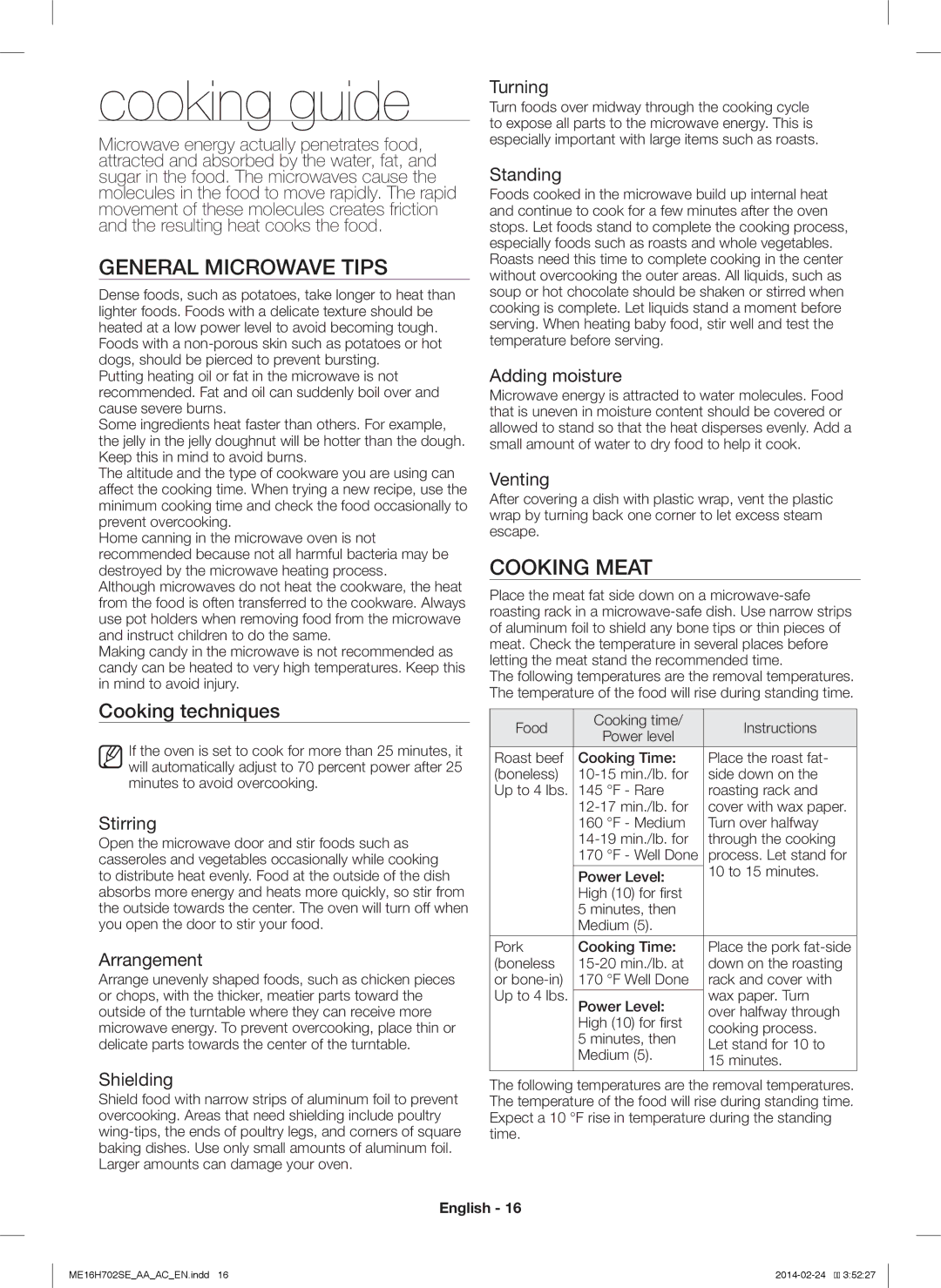ME16H702SE specifications
The Samsung ME16H702SE is a versatile and powerful over-the-range microwave that combines innovative features and advanced technology to elevate your cooking experience. With a sleek design and a variety of functionalities, this microwave is an excellent addition to any modern kitchen.One of the standout features of the Samsung ME16H702SE is its large capacity. Offering 1.7 cubic feet of internal space, it provides ample room for reheating large dishes and cooking multiple items simultaneously. The spacious interior accommodates larger plates and containers, making meal preparation easier and more efficient.
Equipped with a powerful 850 watts of cooking power, this microwave ensures fast and even heating. The precise cooking performance is complemented by the Sensor Cooking technology, which automatically adjusts cooking time and power level based on the moisture released from the food. This feature helps to eliminate guesswork and ensures perfectly cooked meals every time.
The Samsung ME16H702SE also boasts a user-friendly control panel with a digital display. The intuitive interface allows you to easily navigate through various cooking options and settings, including pre-programmed buttons for popcorn, reheating, and defrosting. The microwave also includes several power levels to suit your specific cooking needs, giving you the flexibility to prepare a wide range of dishes with precision.
Another notable feature of this model is the eco mode, which is designed to reduce energy consumption. By using less energy when the microwave is not in use, the Samsung ME16H702SE contributes to a more eco-friendly kitchen environment.
In addition to performance, the ME16H702SE is designed with ease of cleaning in mind. The ceramic enamel interior is not only aesthetically pleasing but also resistant to stains and easy to wipe down. This feature ensures that maintaining a clean microwave is simple and hassle-free.
Furthermore, the microwave includes a powerful ventilation system with a two-speed exhaust fan that effectively removes smoke, steam, and odors from your kitchen. This built-in ventilation enhances air quality and keeps your cooking area fresh.
Overall, the Samsung ME16H702SE combines style, functionality, and advanced technology, making it a reliable choice for any household. Whether you’re reheating leftovers or cooking from scratch, this over-the-range microwave is designed to meet all your culinary needs.

